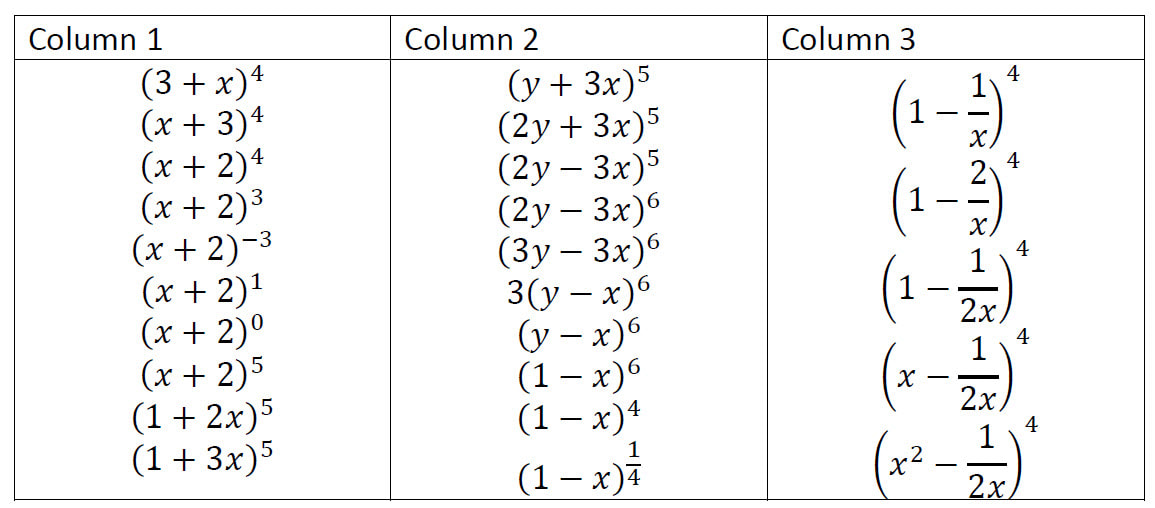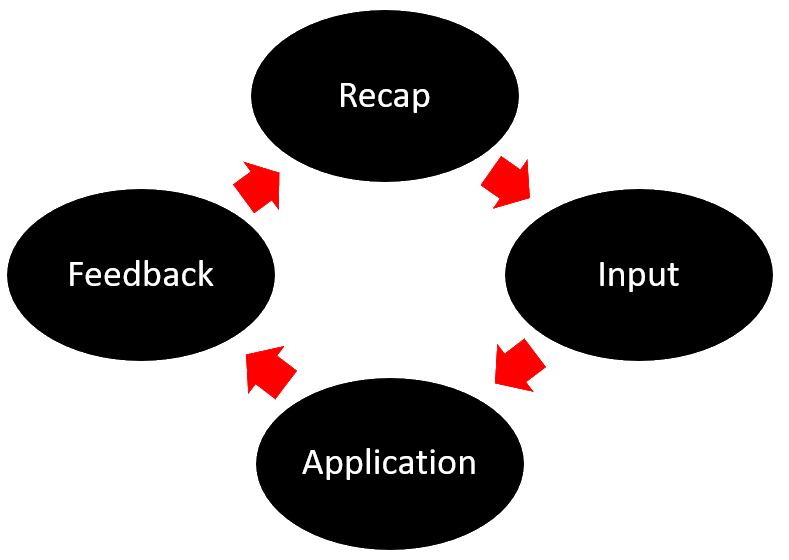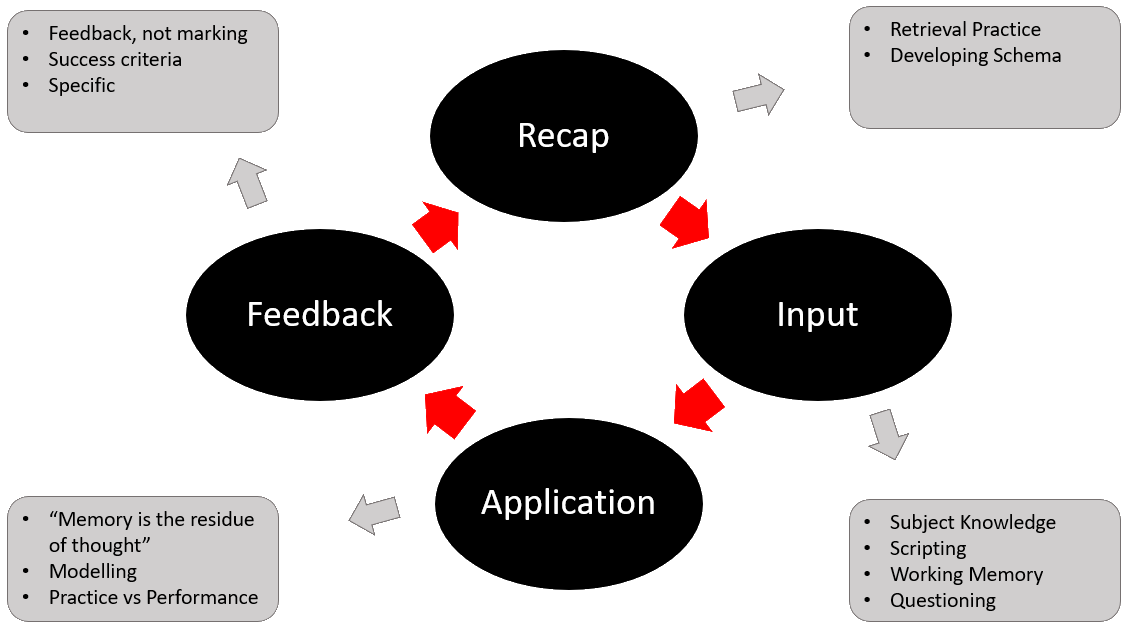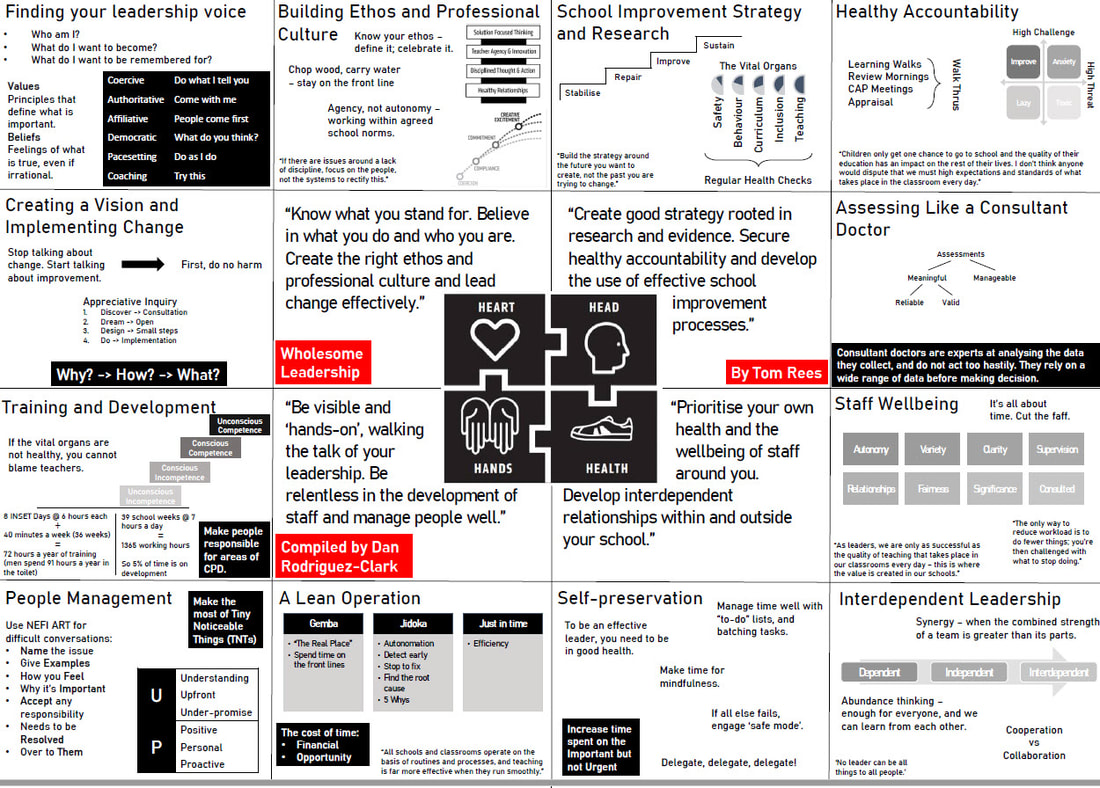- Most teachers and school leaders think they know what makes great teaching, but they don't;
- Most teachers and school leaders think they know what it takes to improve teaching, but they don't;
- Most teachers and school leaders think that teaching in their classroom/department/school is good enough, but it isn't.
|
I have just finished reading The Teaching Delusion by Bruce Robertson, and it hit all the right notes for me. I found myself nodding along, lapping up what Robertson says, constantly thinking "This is exactly what I think, but said so much more eloquently." In fact, I am thinking of copying a few extracts to give to people when I can't put into words my own thoughts! I jest, of course. There were plenty of insights in the book that I had not thought about before, and a couple of things I disagreed with. The main premise is that no matter how good teaching is, it can always be better. This has been a point I have made at the start of each new school year since getting the job of T&L Coordinator, and my most recent phrasing has been "It is both our right and our duty to continue to improve our teaching". I use this wording carefully, to instil the idea that it is our right to want to continue to improve ourselves, get better at our jobs, and become better teachers. This aligns with Robertson's idea of a Professional Learning Culture. On the other hand, we serve a community of children and their parents (who, in my case, pay a fair amount of money for our services), and it is also our duty to them to do the best job we can, which includes continually improving our teaching. Our duty to the parents who pay, yes, but mainly our duty to the young people we have the pleasure of working with, whose future depends so much on what we say and do, how we make them feel, and what they learn from us. Robertson asserts that The Teaching Delusion is made up of three factors:
1 Comment
The second book by Craig Barton (well, ignoring the non Maths teaching ones) is everything a sequel should be: it builds upon the greatness of the first, but has its own tale to tell. It gets into the nitty gritty of the story, focusing on one of the smaller parts of the first. And yes, it is a bit controversial. I am not going to write a summary here. I thought I was, but that would not be able to do any justice to the book. If you are a Maths teacher, you should read the book. Craig is open throughout about not trying to tell you what to do, but rather telling what he does, why he does it, and provoking you to think about how you could adapt those things to work for you (if indeed you find them valuable in the first place). But even if you disagree with everything Craig has to say, then you will still learn a lot from reading the book. If nothing else, if you do all the sequences of questions he provides, you will be giving your subject knowledge a good servicing! Here I am going to share a few of my main takeaways, and what I want to incorporate into the book. In my teaching In the very last chapter of the book, Craig gives some advice on "Making it work", and the first thing is to choose one thing you want to try. Well, I am going to ignore him on that! Well, not completely. I am going to choose one thing that is new, and 3 things that I currently do but want to adapt after reading the book. Reflect, Expect, Check, Explain - this is the new one. I have been using some sequences of questions from Craig's www.variationtheory.com website, as well as making some of my own, but, honestly, they have really just been a set of questions. They have allowed me to direct student attention to certain things, but I have not been systematic enough in my approach to develop their mathematical thinking in the way Craig describes. Since starting the book I have been adding some elements, in particular the reflect stage, but I want to make more of this. So I am going to try the full structure, and use the Prompt Questions that Craig suggests (available on his website: http://mrbartonmaths.com/booklinks/). I think I will need to use a template to help them structure the process too. My plan is to try this with my first year IB class, though I need to think carefully about what topic to do this with. We have some recap of indices and logarithms coming up, so that seems like a good fit. I will blog again on this when I give it a go. I have been using some sets of questions with them (such as the one below on Binomial Expansion), and have made short references to the ideas of reflecting on what has changed, but will need to be more explicit about this. Another aspect that I have not been building in that Is important is the idea of Fluency Practice before the intelligent practice. I used to do too much fluency practice, now I am not doing enough for students to get the most out of these sequences of questions. For students to develop the mathematical skills, they need to be more confident with the method they need to apply first, Atomisation - this is something I have been exploring, in particular with putting together the IGCSE Booklets and IB Lesson Sheets, but the systematic way Craig approaches it grabbed my attention. Going through the small atoms that make up a new idea and ensuring they are all secure first is something I want to look into further, but think that will definitely need to be a collaborative project. I am also thinking about how I could do some of that in the "flipped" model with IB classes. Example problem pairs - just a minor adaption to my current process, but I need to find a consistent way to get all their attention on the example. I print examples and your turns in the booklet/lesson sheet, so the easiest way seems to be to get them to shut their booklet when I go through the example. Even go as far as put it on the floor if necessary. Then they can open their booklet once I am done to try the Your Turn. I also make scans of the sheets available to students after they are complete, so I might get students to NOT copy the example in class, and then get them to do the example as a homework, where they can check against my version. This would give them another exposure pretty soon after the first, and give them instant feedback on it. Rule - I have been playing around with Frayer Diagrams for a year or so too, and the Rule sequence is a nice structure to lead into these. So far I have been using them to introduce the definitions, but this has not really been successful. Flipping this and getting students to fill them in themselves after seeing a sequence of examples, non-examples and boundary examples is a much better approach. In out department I also want to get my department thinking more deeply about the questions we offer students and the experiences they get of thinking mathematically. I am hoping to get some time with the whole department to get them to do some sets of questions over the coming months, and then start building some of our own sets. I think I will start with the Reflect, Expect, Check, Explain cycle. It is difficult as we are still in lockdown from Covid, but I think we can make it work via breakout rooms in Zoom. Thoughts and plans are coming together…
I have just finished reading A Compendium of Mathematical Methods by Jo Morgan. It is a book directed at Maths teachers and has a simple purpose: sharing different methods that are used to perform some common processes that we teach. For each of 19 topics, spanning the whole of secondary maths, Jo goes into depth on a variety of methods, always using 2 well chosen examples to show some of the subtleties you might otherwise miss. Accompanying this are some of her own notes, and excerpts from historical textbooks to show how these were approached in the past. Jo stays neutral throughout the book, never saying one method is the best, but rather presenting them as they are. A few concerns about some methods which rely on following a procedure rather than developing understanding are raised, but not in a judgemental way. The tone throughout is one of trying to start a conversation about mathematical methods. When we come out of lockdown, I am going to take some of the chapters to my department to discuss. I think it is a great idea to talk about the merits of different methods, and looking at ones we don't use will help teachers develop their own subject knowledge too. I am also a fan of being consistent across the department in the main method we teach. I think this has benefits when students change teachers, and allows for more continuity. As we are a 3-18 all through school, we could even extend this to the primary school to discuss how we teach the foundation skills. In terms of sharing methods with students, it is also nice to have a few other methods "up your sleeve" for those situations when they do not understand the primary one you use. Or with those who need an extra push, asking them to see if they can understand why different methods are actually the same can push their understanding. Perhaps using a method comparison example like Emma McCrea discusses in Making Every Maths Lesson Count could be used. One thing that the book has made very clear to me is that we need to move to an area model of multiplication. It is a versatile and easy to understand method for multiplication, that can easily be extended to more complex topics such as algebraic expansion and factorising. I will be taking this to our department soon as I think this is something we should be consistent about. It is a great read for any Maths teacher. It is not something that you need to read in one go, and perhaps is better read by chapter when you want to look at a particular topic. And I am with Jo. Let's talk about methods.
Teach Like Nobody's Watching by Mark Enser is a call for teachers to take control of their teaching, rather than pandering to outside entities (be it Ofsted, SLT, parents). It is based on two underlying principles: that we should do what is effective (do things that work) and what is efficient (don't do things the long way if there is a shorter way). It is the antidote to the fads of education: things that either don't work (teaching to learning styles), or have been morphed from what does work in such a way to make them useless (plan lessons in three parts), or they do (partially) work but are not worth the time investment in most cases (discovery models of learning). Efficiency, as the author points out, is a term that is often viewed with disdain in education. "There is no place for efficiency in schools" is something I have had said to me, implying that efficiency is about stripping back and reducing the level of education. But that is not what efficiency is about. It is about reaching the same level with the least possible resources wasted. Those resources are not paper or electrical devices. Enser is talking about time costs of certain tasks. Every minute of teachers time spent doing something that could have been achieved in less time is time not used to prepare lessons, feedback to students, improve their own practice. Being efficient is about using our time wisely to achieve the best results, in the shortest time. And Enser argues that an efficient and effective teacher follows four stages. He compares these to "real world teachers", such as driving instructors, who follow these stages naturally. There are a lot of benefits to having a simple structure around which to base your teaching: it is easy to remember, meaning you are more likely to do it; it cuts out unnecessary stuff that has little impact on student learning; it reduces teacher stress and workload, and so makes them better at their job. In Part 1 of the book, Enser goes into detail on each of these four aspects of effective and efficient teaching, linking to research and classroom practice. There are some suggestions for activities, but mostly it focuses on why these are important and the guiding principles of each. Part 1, which is about half the book, is, in my opinion, an essential read for all teachers. It overviews what simple, effective and efficient teaching should be based upon, and gives teachers the springboard to take control of their own practice. It celebrates the classroom teacher. Part 2 moves on to look at the curriculum and assessment. It looks at the taught curriculum and how we sequence it, the "super-curriculum" of things we want our students to know/experience/learn outside of structured lesson time, and how we can go about assessing if we have been successful at this. Again, all these are addressed from a viewpoint of being effective and efficient, and not wasting time on tasks that do not improve the learning of the students. The final chapter in part 2 is all about running department meetings and how to use them to develop one of the most important parts of great teachers: their subject knowledge. This chapter in itself is a must read for any head of department (or line manager to a head of department) as it is a treasure trove of simple ideas to help make departmental CPD time more effective, and less based on administrative tasks. Part 3 looks at the wider school, and what role school leadership has to play in allowing teachers to do their job without interference. The thorny issues of behaviour, data tracking, non-negotiables, CPD and feedback policies are tackled, with Enser again arguing to cut these back to what is actually useful for teachers. Each of these is accompanied by a short case study from somebody in a leadership position from schools across the UK. The whole premise of the book is to allow teachers to Teach Like Nobody's Watching, and at every turn Enser brings our attention to things we do which are not essential, and the things we could be doing that would make us more time efficient in doing our jobs. Making the time to read this book (and reflect on it) would be an effective and efficient way for all teachers to keep improving what they do, and help our students do the best they can. My Takeaways The simplicity of the recap, input, application, feedback model of teaching is great. I have been guilty of over-complicating things in the past, both as a teacher and T+L leader, and this call to simplify what we do has struck a nerve with me. My teaching does (now) largely follow this approach, though reading this has made me more aware of the importance of each stage. It can be easy to skip recap, for example, when pushed for time. But building in the stereotypical "Last lesson we..." has been something I have implemented immediately, even in live online teaching. But here are a few highlights from each chapter: Recap - importance of connecting new learning to old material explicitly; Cornwell notes; show students the puzzle box to help them fit new knowledge in the right place. Input - requires attention and good behaviour; the importance of good subject knowledge; limits on working memory; dual coding; interactive through questioning; don't rush! Application - get students thinking hard; break it down and bring it together; ensure understanding before application; make the task focus on what you want them to learn; importance of modelling; is the purpose of application to perform or to practice. Feedback - feedback is not the same as marking; reduce the need for feedback (careful input, give success criteria); reduce time (verbal, whole class); make it count (have a purpose, action points, make it specific). Programme of Study - the curriculum is the journey you wish to take your pupils on, so make it a conscious choice; build upon previous knowledge; identify and keep coming back to threshold concepts. Super-curriculum - avoid a scattergun approach and link to the main curriculum; increase cultural capital with general knowledge within classes; better than a reading list is to set reading homework and link to curriculum. Assessment - designed to make learning visible; be careful about what you are assessing (does language cause the issues); consider the types of validity (does it cover everything, would two tests on same topic produce same results, would a test on something different produce different results); benefits of rank assessments. Department meetings - develop subject knowledge (audit, address gaps, adapt practice); develop curriculum (question, map, evaluate); common culture (expectations of student work, collaborate). Leaders supporting teaching - it is impossible to teach well when there is poor behaviour; there needs to be an understanding of principles to avoid cargo cults; separate CPD from meetings and focus on why before handing to departments. In terms of leading T+L, the model has given me an idea for developing our new coaching programme, which I will write about soon. It has also made me reflect on the overly complicated nature of our own Principles of Great Teaching (...) which contain 16 different aspects. I wonder if collecting them under bigger terms would be useful? Again, building this in to the Coaching programme is on my to do list. This year was meant to be about departments going away and looking at how the Principles fit in their subjects, and what they look like, but the lockdown has pushed that back. I still need to ensure these conversations are happening when we get back.
Wholesome Leadership by Tom Rees is a whole approach to school leadership. It is based around the model of the heart, the head, the hands and the health of school leaders, and goes into detail as to what successful leaders in schools do in each of these categories. Throughout the book, Rees tells personal stories of how he has developed as a leader in the different aspects, as well as giving specific examples of his experiences. This personal touch really helps the book feel more authentic, as you can tell it is written by somebody who has lived these experiences. This is balanced nicely by the interviews with others who are (or have been) involved in leadership in education, each giving their own perspective on one of the aspects of the Wholesome Leadership model. Before delving into the nitty gritty, Rees shares a handy planning tool, which he calls the Five Fives, for managing change, a big part of being a school leader. Throughout the book he refers back to this tool, providing a template at the end of each chapter to encourage leaders to engage in planning their changes. Also at the end of each chapter are a series of reflection questions for leaders to use to ascertain what areas they would like to work on in their leadership/school. Combining these with the Five Fives planning tool is an excellent way for leaders to take action after reading the chapter. Illustrated by Oliver Caviglioli, the visuals add to the whole experience of the book. Each chapter starts with a summary of key quotes which gives the reader a nice taster of what is to come. The highlight of the visuals are the WalkThrus for Learning Walks, Appraisal, CAP Meetings and Review Mornings. Each of the four parts of the Heart, Head, Hands and Health model is broken into 3 linked chapters. Although it is an easy book to read all the way through, it is also designed so you can jump to a particular chapter that you are interested in. I can see myself popping back to chapters on a regular basis to reacquaint myself with the ideas, now that I have read the whole thing. I have created a summary document of the book. The image is below, but you can find the PDF version here, which can be printed up to A2 (it also works pretty well in A3). Some more details on each chapter are below that.
|
Dan Rodriguez-Clark
I am a maths teacher looking to share good ideas for use in the classroom, with a current interest in integrating educational research into my practice. Categories
All
Archives
August 2021
|




 RSS Feed
RSS Feed
